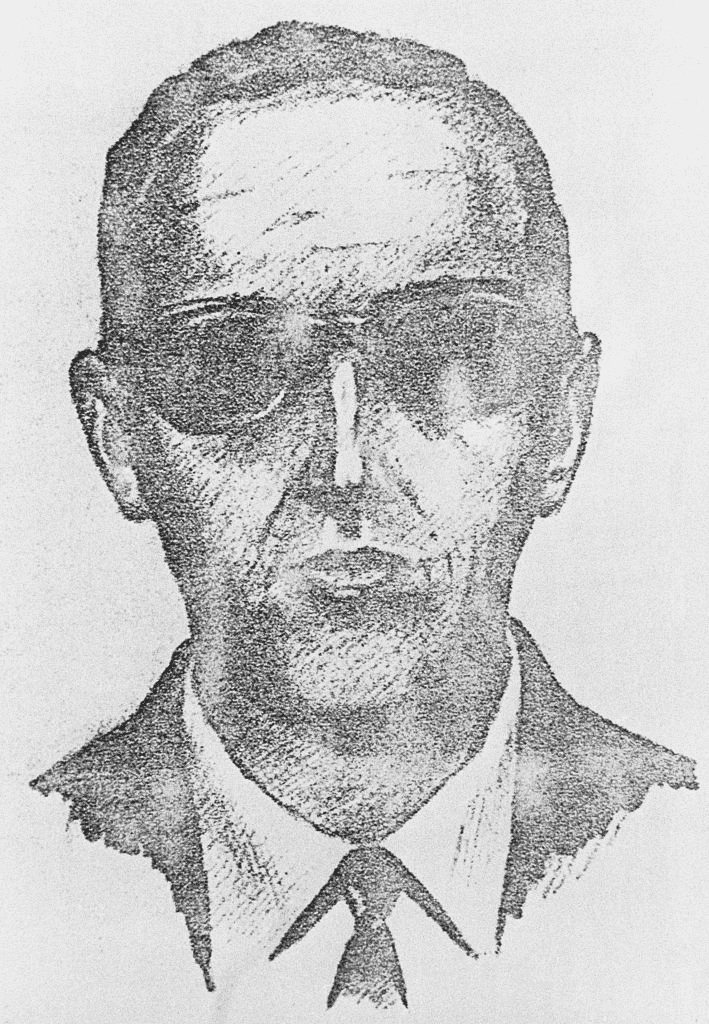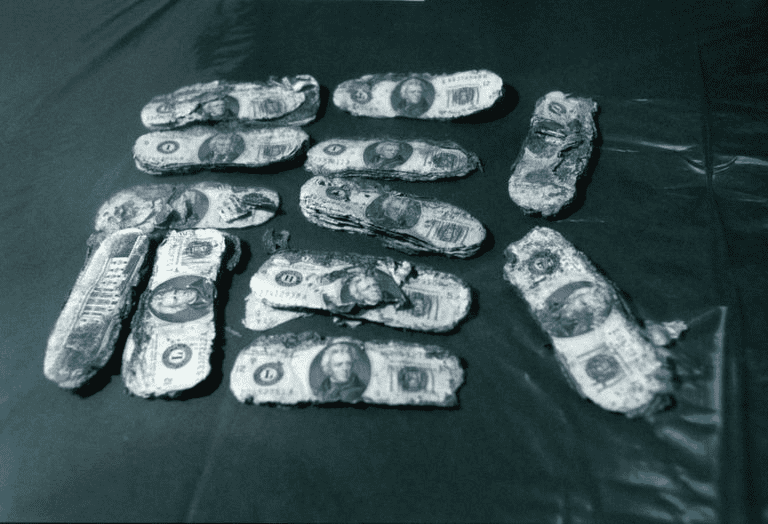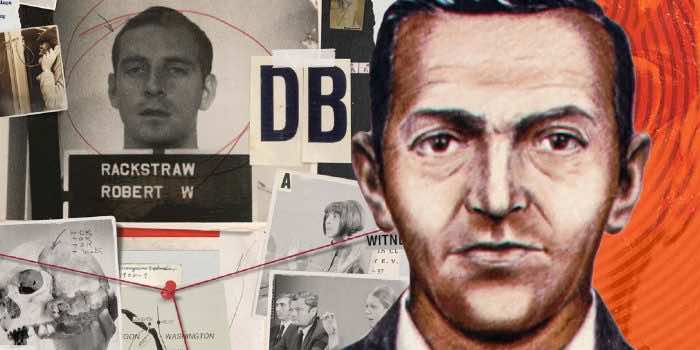Most pending investigations drag on, like the 1971 D.B. Cooper case, the only unsolved commercial airline hijacking. But, thanks to amateur investigators, we might now have new scientific evidence that will assist in tracking down the skyjacker.
Three particles extracted from D.B. Cooper’s necktie provide an exciting new clue in the unsolved 50-year-old skyjacking.
An amateur detective believes the minuscule metals are proof of the skyjacker’s employer on November 24, 1971, when he leaped from a Boeing 727 airliner over the Pacific Northwest. It’s a hint that could lead right to Cooper’s identity.

“I believe that we have identified not only the company where D.B. Cooper came from but also the specific division within the company that D.B. Cooper came from,” said Eric Ulis of Arizona to King 5, who has hunted the skyjacker for 14 years.
Ulis’ evidence comes from a scientific report written ten years ago by a team assembled by the FBI to examine evidence in the cold case. This team, led by researcher Tom Kaye, removed over 100,000 particles off DB Cooper’s necktie. The skyjacker is thought to have ditched the tie in Northwest Orient Airlines seat 18-E before leaping off the plane with parachutes and a $200,000 ransom.
Ulis discovered three specks of an alloy comprised of titanium and antimony, both earth elements, amid the tens of thousands of particles on Cooper’s tie-in lab results. When he looked into this alloy, he discovered that a Pennsylvania metals producer registered for a patent in 1957 to develop a titanium-antimony alloy.
“I’ve been looking for something that I would call tantamount to commercial DNA, the idea being that just as human DNA points to a specific individual commercial DNA close to a specific company, and indeed, I found three particles of a very unique and very rare alloy,” said Ulis.
According to records, Rem-Cru, situated in Midland, Pennsylvania, made titanium-antimony. However, Ulis learned via additional research and interviews that the company never sold the device to the aerospace industry. Nevertheless, he feels that the titanium antimony on Cooper’s tie is significant evidence that the skyjacker worked at Rem-Cru at some point due to its limited distribution.
“I have managed to isolate one person in particular, one person of interest in particular that I’m looking into, that appears to check several of the boxes. I’m not releasing the person’s name publicly for obvious reasons. But I’m going to continue to look into him,” Ulis said.
Rem- cru’s assets which no longer exist, were sold to more giant corporations over the years. Ulis has contacted Allegheny Technologies in Pennsylvania and other companies that now possess those assets and may have historical information.
Kaye’s team discovered titanium and other rare particles on Cooper’s tie, leading to their long-held belief that Cooper worked for Boeing or one of its contractors. However, Ulis is the first to associate particles with a single corporation.
In the 1950s and 1960s, Rem-Cru was a phenomenal metals producer competing for government contracts to create parts for jet-propelled aviation and the space race.
“Going higher, faster, further – that was kind of the mantra of the military and also NASA,” said Ted Huetter of the Museum of Flight in Seattle.
The Museum of Flight includes a Vought F8 Crusader, the Navy’s first supersonic fighter plane from the 1950s. Rem-Cru supplied the titanium for the Crusader.
Ulis stated that Rem-Cru was a Boeing contractor, which may have enabled D.B. Cooper to travel to the Pacific Northwest. The FBI has long claimed that Cooper was well-versed in the Pacific Northwest.

“(Rem-Cru employees) would work with the engineers at Boeing on the assembly floor. So, these guys were actually on the floor and around the aircraft in the 1960s,” said Ulis.
The mid-1950s development of titanium-antimony and the November 1971 skyjacking are split by a sizable amount of time. Ulis is convinced that his D.B. Cooper suspect was in financial difficulty before the skyjacking and acted out of desperation.
“(Rem-Cru) went through a series of boom and bust cycles, not unlike a lot of other companies in the aerospace sector, specifically in 1971,” said Ulis.
A recession that rocked the area just a few months before Cooper’s crime resulted in the iconic sign that read: “Will the last person leaving Seattle – turn out the lights?” Following the termination of the Supersonic Transport project, Boeing fired thousands of contractors and laid off thousands more.

On Thanksgiving Eve 1971, a man named Dan Cooper boarded a plane from Portland to Seattle; at the time, no evidence of identity was required. He told a stewardess in the middle of the flight that he had a bomb in his briefcase and demanded $200,000 in cash and four parachutes upon arrival at Seattle-Tacoma International Airport. Cooper ordered the 727 passenger jet to take off again for Mexico after the FBI accepted his requests. He jumped out above southwest Washington, using the 727’s “air stairs” staircase, which could be lowered while in flight. Cooper’s name was misspelled as “DB,” and the error continued to exist.
Cooper’s name and fate have remained unknown since. But Ulis is convinced that his lead will reveal the skyjacker’s identity.


